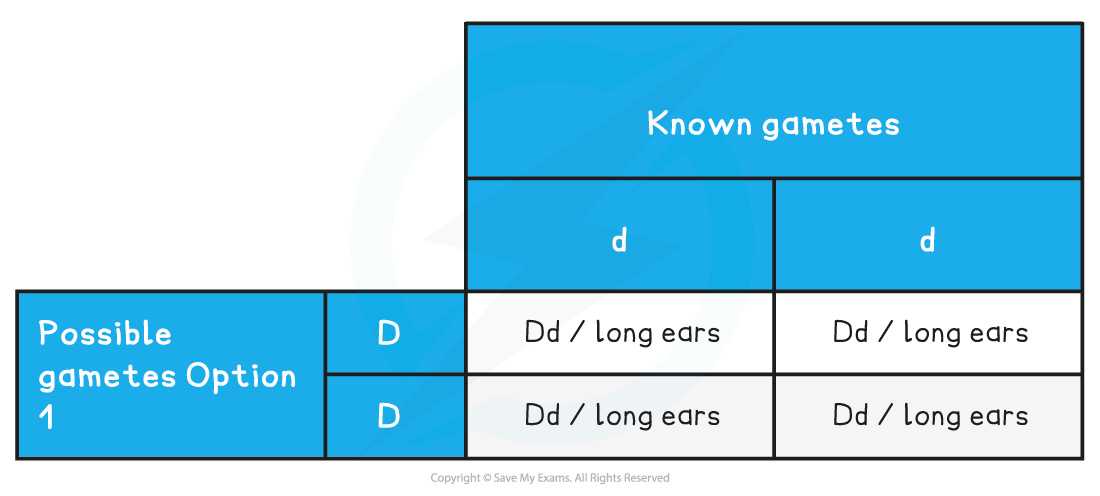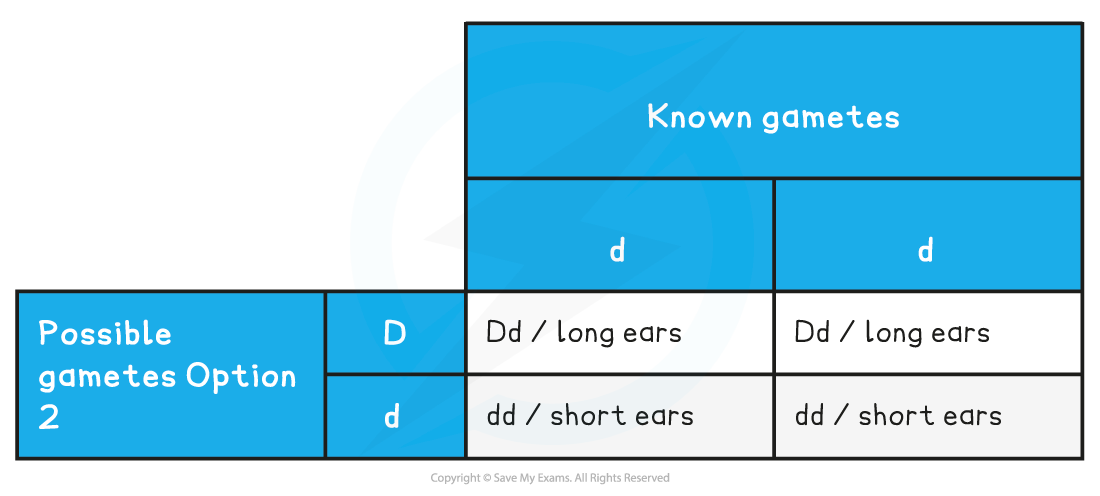Predicting Inheritance: Test Crosses (Cambridge (CIE) A Level Biology): Revision Note
Exam code: 9700
Predicting inheritance: test crosses
A test cross can be used to deduce the genotype of an unknown individual that is expressing a dominant phenotype
The individual in question is crossed with an individual that is expressing the recessive phenotype
This is because an individual with a recessive phenotype has a known genotype
The resulting phenotypes of the offspring provides sufficient information to suggest the genotype of the unknown individual
Results
For a monohybrid test cross:
If no offspring exhibit the recessive phenotype then the unknown genotype is homozygous dominant
If at least one of the offspring exhibit the recessive phenotype then the unknown genotype is heterozygous
For a dihybrid test cross:
If no offspring exhibit the recessive phenotype for either gene then the unknown genotype is homozygous dominant for both genes
If at least one of the offspring exhibit the recessive phenotype for one gene but not the other, then the unknown genotype is heterozygous for one gene and homozygous dominant for the other
If at least one of the offspring exhibit the recessive phenotype for both genes then the unknown genotype is heterozygous for both genes
Worked example: test crosses
Rabbits have a single gene for ear length that has two alleles:
D, a dominant allele that produces long ears
d, a recessive allele that produces shorter ears
A breeder has a rabbit with long ears and they want to know the genotype of the rabbit
There are two possibilities: DD or Dd
The breeder crosses the long-eared rabbit with a short-eared rabbit
A rabbit displaying the recessive short ear phenotype has to have the genotype dd

Predicted ratio of phenotypes of offspring – 1 long ears
Predicted ratio of genotypes of offspring – 1 Dd

Predicted ratio of phenotypes of offspring – 1 long ears : 1 short ears
Predicted ratio of genotypes of offspring – 1 Dd : 1 dd
The breeder identifies the different phenotypes present in the offspring
There is at least one offspring with the short ear phenotype
This tells the breeder that their rabbit has the genotype Dd
If the rabbit was genotype DD none of the offspring would have short ears
Examiner Tips and Tricks
Make sure before you start a test cross you think about the following: how many genes are there, how many alleles of each gene are there, which is the dominant allele, what type of dominance is it and is there linkage or epistasis between genes?

Unlock more, it's free!
Did this page help you?